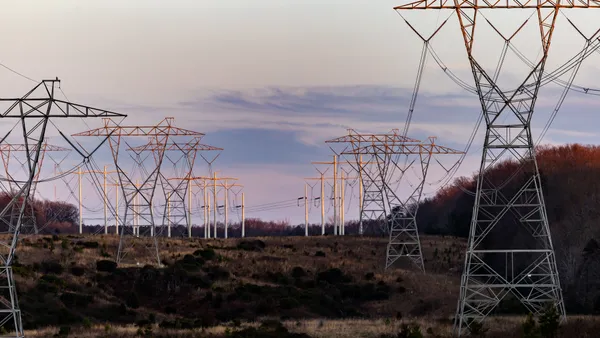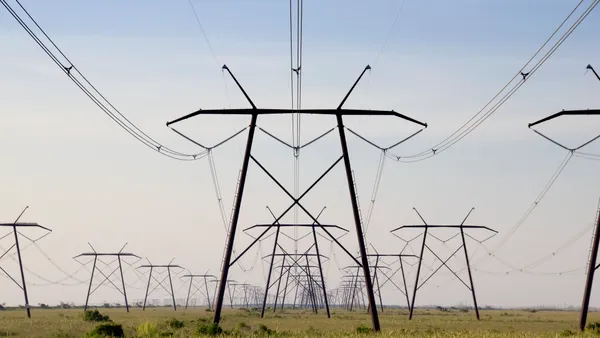-
Dive Brief:
- The U.S. Department of Energy has issued a final rule establishing procedural regulations for how the Secretary of Energy will issue emergency orders under the Federal Power Act in the event of a grid emergency.
- The emergency directives would be ordered to maintain or restore grid reliability should the President declares a grid security emergency — something which could result from a physical attack, a cyberattack, an electromagnetic pulse or a geomagnetic storm event.
- The Secretary of Energy has a range of powers in an emergency situation, including requiring the temporary connection of generation facilities and temporary authorization to provide access to classified materials.
Dive Insight:
DOE's new rules are designed to "ensure the expeditious issuance of emergency orders under the Federal Power Act" at times when the electric transmission system may be under attack or damaged by a natural disaster.
The agency's centralized direction following a declared grid security emergency will "help the Department to coordinate resources efficiently to minimize the impact of the emergency," the rule says.
The new rule outlines procedures for outreach, consultation,communication of orders, clarification or reconsideration of orders, temporary access to classified and sensitive information, termination of orders, tracking compliance through to enforcement; rehearing and judicial review.
Emergency orders could apply to NERC, regional entities, or “any owner, user, or operator of critical electric infrastructure or of defense critical electric infrastructure within the United States.”
Emergency orders expire no later than 15 days after its issuance, but may be reissued so long as authorized by the President.
In the event of a grid emergency, DOE will activate its unified command structure and coordinate outreach efforts. The Emergency and Incident Management Council will anchor the DOE’s proposed response via its recommendations to the Secretary. However, ultimate authority lays with the Energy Secretary.
"Based on the nature and timing of the grid security emergency, however, the Secretary maintains discretion, based on a judgment of the relevant circumstances, to issue an emergency order without EIMC input," the rule specifies.
DOE said it received a range of comments from the electric sector, with many highlighting the need to integrate issues pertaining to grid security emergencies into the ongoing partnership between the federal government and the electric subsector.
Last year, more than 6,000 individuals participated in a simulated attack on the power grid, an exercise held once every two years by the North American Electric Reliability Corp. Officials say in excess of 400 organizations were involved in GridEx on two separate days. A report detailing the exercise's findings is expected out next spring.
DOE said it is "committed to working with all necessary parties through existing mechanisms" such as the
Electricity Subsector Coordinating Council and the Electricity Information Sharing and Analysis Center, "to align emergency measures with ongoing preparedness activities." The EISA-C is one of the key groups behind the GridEx simulation.













